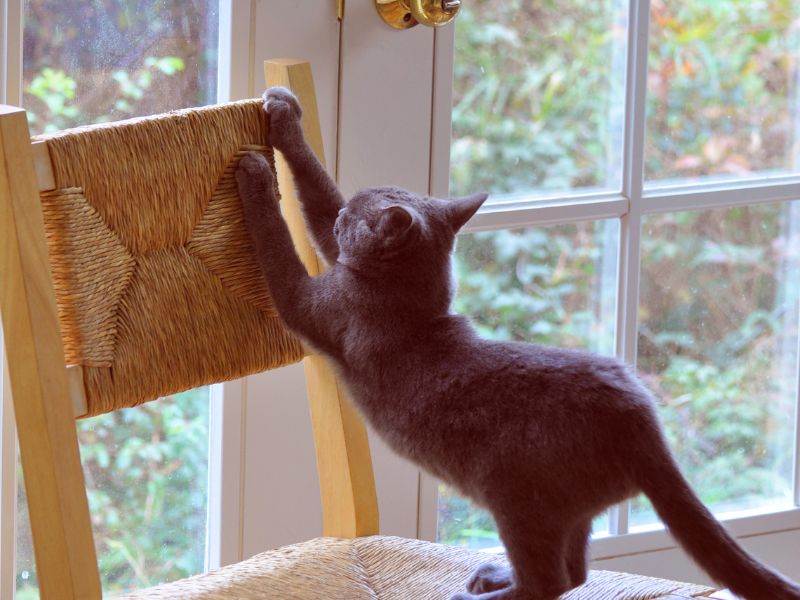Do’s and Don’ts Every Cat Owner Should Know
Cats are one of the most popular pets in the world, and it’s no surprise why. They are adorable, playful, and have personalities that can make even the grumpiest of people smile. However, owning a cat is not just about the cute factor. There are many things that every cat owner should know to ensure that their feline friend leads a happy and healthy life. From feeding and grooming to litter training and playtime, there are many do’s and don’ts that every cat owner should be aware of. So, whether you are a first-time cat owner or have had cats for years, this guide will provide you with all the information you need to be a responsible and loving cat parent. Let’s dive into the ultimate guide to owning a cat.
Preparing for Cat Ownership
Before bringing a cat into your home, there are a few things you should consider. First and foremost, make sure that everyone in your household is on board with the idea of having a cat. Owning a cat is a big responsibility, and it’s important that everyone is committed to taking care of them. Additionally, if you rent your home, make sure that your landlord allows pets.
Once you’ve decided that you’re ready to bring a cat into your life, it’s time to think about what kind of cat would be the best fit for you. Consider your lifestyle and what kind of cat would fit in best. For example, if you live in a small apartment, a high-energy breed like a Bengal might not be the best choice. On the other hand, if you have a lot of space and are looking for a playful companion, a Maine Coon might be a great fit.
Lastly, make sure that you have everything your new cat will need to be comfortable and happy in their new home. This includes a litter box, food and water bowls, toys, and a scratching post. You may also want to invest in a cozy bed and a carrier for trips to the vet.
Do’s and Don’ts of Cat Ownership
Now that you’ve prepared for cat ownership, it’s time to talk about the do’s and don’ts of being a cat owner. Here are a few things you should keep in mind:
Do’s:
- Do give your cat plenty of love and attention. Cats are social animals and need interaction with their owners to be happy and healthy.
- Do provide your cat with high-quality food that is appropriate for their age and activity level. You can consult with your vet to determine what kind of food is best for your cat.
- Do provide your cat with fresh water at all times.
- Do keep your cat’s litter box clean. Cats are clean animals and won’t use a dirty litter box.
- Do provide your cat with plenty of toys and a scratching post to keep them entertained and to prevent them from damaging your furniture.
- Do take your cat to the vet for regular check-ups and vaccinations.
Don’ts:
- Don’t declaw your cat. Declawing is a painful and unnecessary procedure that can cause lifelong health problems for your cat.
- Don’t feed your cat table scraps or human food. Many human foods are toxic to cats and can cause serious health problems.
- Don’t let your cat outside unsupervised. Cats can easily get lost or injured outside, and there are many dangers such as cars and wild animals.
- Don’t punish your cat for bad behavior. Cats don’t respond well to punishment and it can damage your relationship with them.
- Don’t ignore your cat’s health problems. If you notice any changes in your cat’s behavior or health, take them to the vet right away.
By following these do’s and don’ts, you can ensure that you are providing the best possible care for your cat.

Feeding Your Cat – What to Do and Avoid
Feeding your cat a healthy and balanced diet is one of the most important things you can do to keep them healthy. Here are a few tips on what to do and avoid when it comes to feeding your cat:
What to Do:
- Do feed your cat high-quality cat food that is appropriate for their age and activity level. Look for cat food that lists a protein source as the first ingredient.
- Do provide your cat with fresh water at all times.
- Do feed your cat on a regular schedule. Most cats prefer to eat several small meals throughout the day.
What to Avoid:
- Avoid feeding your cat table scraps or human food. Many human foods are toxic to cats and can cause serious health problems.
- Avoid feeding your cat too many treats. Treats should be given sparingly and should not make up a significant portion of your cat’s diet.
- Avoid overfeeding your cat. Obesity is a common health problem in cats and can lead to serious health problems such as diabetes and heart disease.
By following these tips, you can ensure that your cat is getting the nutrition they need to stay healthy.
Grooming Your Cat – Tips and Tricks
Grooming your cat is an important part of cat ownership. Not only does it keep your cat looking and feeling their best, but it can also help prevent health problems such as hairballs. Here are a few tips and tricks for grooming your cat:
Brushing:
- Brush your cat regularly to remove loose hair and prevent hairballs.
- Use a soft-bristled brush to avoid irritating your cat’s skin.
- Brush your cat in the direction of their fur growth.
Bathing:
- Most cats do not need to be bathed regularly. However, if your cat gets into something dirty or smelly, a bath may be necessary.
- Use a shampoo that is specifically formulated for cats.
- Make sure to rinse your cat thoroughly to avoid leaving any shampoo residue on their skin.
Nail Trimming:
- Trim your cat’s nails regularly to prevent them from becoming too long and causing discomfort.
- Use a pair of cat nail clippers to trim the tips of your cat’s nails.
- Be careful not to cut the quick, which is a vein that runs through the center of the nail.
By grooming your cat regularly, you can keep them looking and feeling their best.
Keeping Your Cat Healthy – Vaccinations, Check-Ups, and Common Illnesses
Keeping your cat healthy is essential to ensuring that they live a long and happy life. Here are a few things you can do to keep your cat healthy:
Vaccinations:
- Make sure that your cat is up-to-date on all of their vaccinations. Vaccinations can protect your cat from serious illnesses such as rabies and feline leukemia.
Check-Ups:
- Take your cat to the vet for regular check-ups. This can help catch any health problems early and prevent them from becoming more serious.
Common Illnesses:
- Keep an eye out for common health problems such as urinary tract infections, dental problems, and skin allergies.
- If you notice any changes in your cat’s behavior or health, take them to the vet right away.
By taking these steps, you can help ensure that your cat stays healthy and happy.
Training Your Cat – Litter Box Training, Scratching, and More
Training your cat is an essential part of owning a cat. Here are a few tips on training your cat:
Litter Box Training:
- Show your cat where the litter box is located and encourage them to use it.
- Keep the litter box clean and in a quiet, private location.
- If your cat is having trouble using the litter box, consult with your vet to rule out any health problems.
Scratching:
- Provide your cat with a scratching post to prevent them from damaging your furniture.
- Encourage your cat to use the scratching post by rubbing it with catnip or placing treats on it.
- If your cat is still scratching your furniture, try covering it with aluminum foil or double-sided tape.
By training your cat, you can ensure that they are well-behaved and happy in your home.
Cat Behavior and Communication – Understanding Your Cat’s Body Language
Understanding your cat’s behavior and communication is essential to being a responsible cat owner. Here are a few things to keep in mind:
Body Language:
- Pay attention to your cat’s body language to understand how they are feeling.
- A cat that is arching their back and hissing may be feeling threatened or scared.
- A cat that is purring and kneading may be feeling content and happy.
Communication:
- Cats communicate with their owners through vocalizations such as meowing and purring.
- Cats also communicate through body language such as tail position and ear position.
- By understanding your cat’s communication, you can better meet their needs and ensure that they are happy and comfortable.

See Also: Welcoming a Kitten into Your Home
And: The Truth About Cat Separation Anxiety
Creating a Safe and Stimulating Environment for Your Cat
Creating a safe and stimulating environment for your cat is essential to their health and happiness. Here are a few tips on creating the perfect environment for your cat:
Safety:
- Make sure that your home is safe for your cat by removing any potential hazards such as poisonous plants or small objects that could be swallowed.
- Keep your cat indoors to protect them from outdoor dangers such as cars and wild animals.
- Keep windows and balcony doors closed or screened to prevent your cat from falling.
Stimulation:
- Provide your cat with plenty of toys and scratching posts to keep them entertained.
- Set up a cozy bed in a quiet location where your cat can relax and sleep.
- Create vertical space for your cat to climb and play, such as cat trees or shelves.
By creating a safe and stimulating environment for your cat, you can ensure that they are happy and healthy in your home.
Traveling with Your Cat – What You Need to Know
If you plan on traveling with your cat, there are a few things you should keep in mind:
Car Travel:
- Make sure that your cat is in a secure carrier for car travel.
- Bring along food, water, and litter for your cat.
- Take plenty of breaks to allow your cat to stretch their legs and use the litter box.
Air Travel:
- Check with your airline to find out their specific requirements for traveling with a cat.
- Make sure that your cat is in a secure carrier that meets the airline’s requirements.
- Talk to your vet about any necessary vaccinations or medications for air travel.
By following these tips, you can ensure that your cat is safe and comfortable during travel.
Dealing with Common Cat Problems – Allergies, Aggression, and More
Every cat owner will encounter some common cat problems at some point. Here are a few tips on how to deal with them:
Allergies:
- If you are allergic to cats, try bathing your cat regularly and keeping them out of certain areas of your home.
- Consider using an air purifier to reduce allergens in your home.
- Talk to your doctor about allergy medications or shots.
Aggression:
- If your cat is showing signs of aggression, such as hissing or biting, consult with your vet to rule out any health problems.
- Consider working with a cat behaviorist to address any underlying behavior issues.
Urinary Tract Infections:
- Keep an eye out for symptoms such as frequent urination, straining to urinate, and blood in the urine.
- Take your cat to the vet right away if you suspect a urinary tract infection.
By knowing how to deal with common cat problems, you can ensure that your cat stays healthy and happy.
Conclusion
Owning a cat can be a wonderful and rewarding experience. By following the tips and advice in this guide, you can ensure that your cat leads a happy and healthy life. Remember to provide your cat with plenty of love and attention, high-quality food and water, and regular trips to the vet. With a little bit of effort and care, you can be a responsible and loving cat parent.

